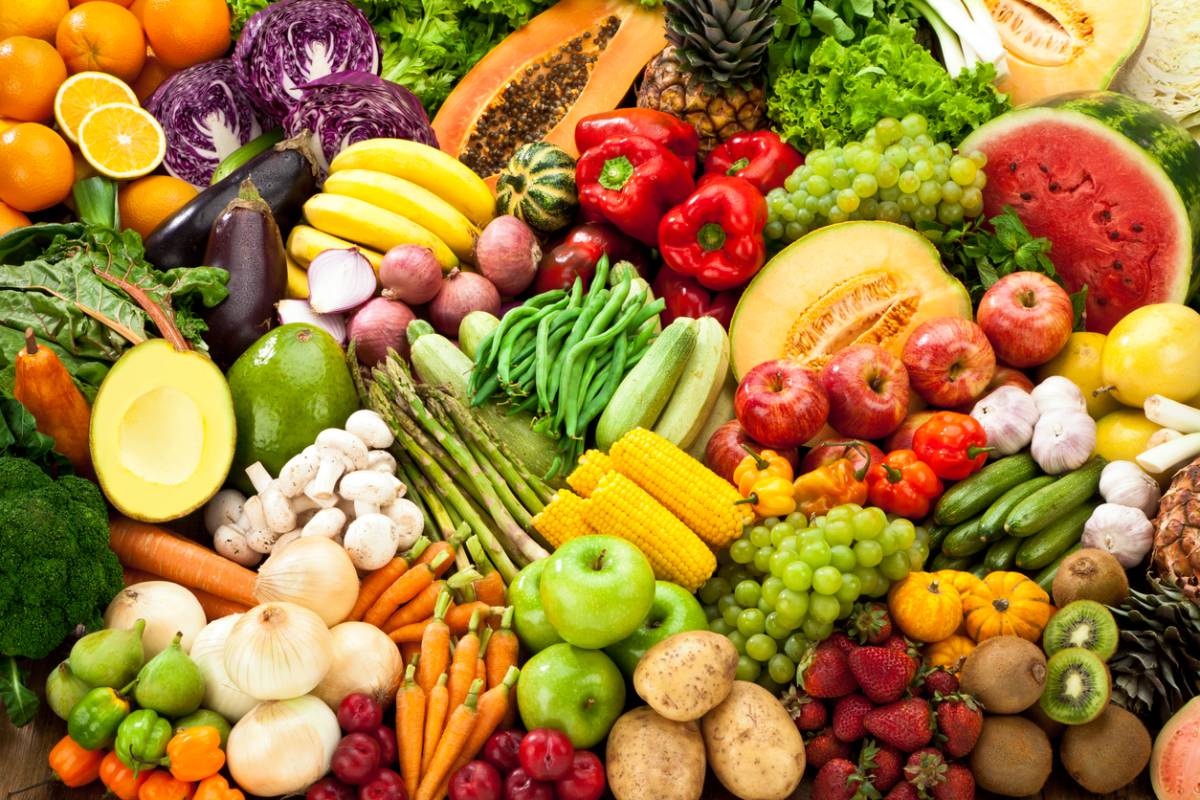Carbohydrate Content of Fruits and Vegetables
Along with vitamins, minerals, and antioxidants, fruits and vegetables contain carbohydrates, biomolecules that consist of carbon, hydrogen, and oxygen atoms. It is recommended that 55-60% of one’s daily caloric intake consist of carbohydrates. [1] Understanding the carbohydrate content of different fruits and vegetables is crucial for managing health, as they are main energy source in the human diet but can lead to complications if consumed in excess.
Carbohydrates exist in two primary categories: simple and complex. Simple carbohydratesare composed of one or two sugar molecules. The most common simple sugar is glucose; fruits contain simple sugars such as fructose, while milk and dairy products contain lactose. These sugars are digested and absorbed quickly, leading to rapid spikes in blood sugar levels. High consumption of simple carbohydrates can lead to alteration of the gut [2] – which in turn may cause inflammation – as well as an increased risk for diabetes, heart disease, and high cholesterol.
Complex carbohydrates consist of long chains of sugar molecules. Starches, found in foods like grains and legumes, are complex carbohydrates. They take longer to break down and therefore have a more gradual impact on blood sugar. Fibers are complex carbohydrates the body cannot digest, and they help stabilize blood sugar levels and contribute to a feeling of fullness, potentially making calorie intake easier to control. [3]
Fruits contain varying amounts of carbohydrates, primarily in the form of simple sugars. A medium-sized apple, for example, contains around 25 grams of carbohydrates, while an average banana has about 27 grams of carbohydrates. [4] Berries like strawberries, blueberries, and raspberries are relatively low in carbohydrates: a cup of strawberries, for example, contains roughly 11 grams of carbohydrates.4 While there is no inherent difference between natural and added sugars, such as those found in a candy bar, it’s worth emphasizing that fruits provide antioxidants, fiber, and other nutrients, while foods rich in added sugars often contain little nutritional value.
Vegetables tend to be lower in carbohydrate content compared to fruits, making them a preferred choice for those aiming to manage their carb intake. One cup of cooked broccoli, for example, contains about six grams of carbohydrates, while a cup of raw spinach has only about one gram of carbohydrates.4 Interestingly, steaming and boiling certain root vegetables can increase their dietary fiber content, as shown in a recent study. [5]
Another important concept to consider when evaluating the carbohydrate content of fruits and vegetables and their impact on blood sugar levels is the glycemic index (GI) and glycemic load (GL). GI measures how quickly a food can raise blood sugar levels. Foods with a high GI (70 or more) are rapidly absorbed and can cause spikes in blood sugar, while low-GI foods (55 or less) are absorbed more slowly. GL is a newer metric that considers GI along with the amount of carbohydrates per serving and provides a more accurate picture of how a food impacts blood sugar. [6] Watermelon, for example, has a high GI because it contains natural sugars, but its GL is relatively low because it’s mostly water. This means that while it can raise blood sugar, the effect is less significant compared to some other high-GI foods.
References
1. Krauss, R. M. et al. Dietary Guidelines for Healthy American Adults. Circulation 94, 1795–1800 (1996), DOI: 10.1161/01.cir.94.7.1795
2. Clemente-Suárez, V. J. et al. The Burden of Carbohydrates in Health and Disease. Nutrients 14, 3809 (2022), DOI: 10.3390/nu14183809
3. National Research Council (US) Subcommittee on the Tenth Edition of the Recommended Dietary Allowances in Recommended Dietary Allowances: 10th Edition (National Academies Press (US), 1989), DOI: 10.17226/1349
4. United States Department of Agriculture, FoodData Central. https://fdc.nal.usda.gov/fdc-app.html#/food-details/171688/nutrients.
5. Andersson, J. et al. Comparison of steaming and boiling of root vegetables for enhancing carbohydrate content and sensory profile. J. Food Eng. 312, 110754 (2022), https://doi.org/10.1016/j.jfoodeng.2021.110754
6. Glycemic index and glycemic load: measurement issues and their effect on diet–disease relationships | European Journal of Clinical Nutrition. https://www.nature.com/articles/1602942, https://doi.org/10.1038/sj.ejcn.1602942
